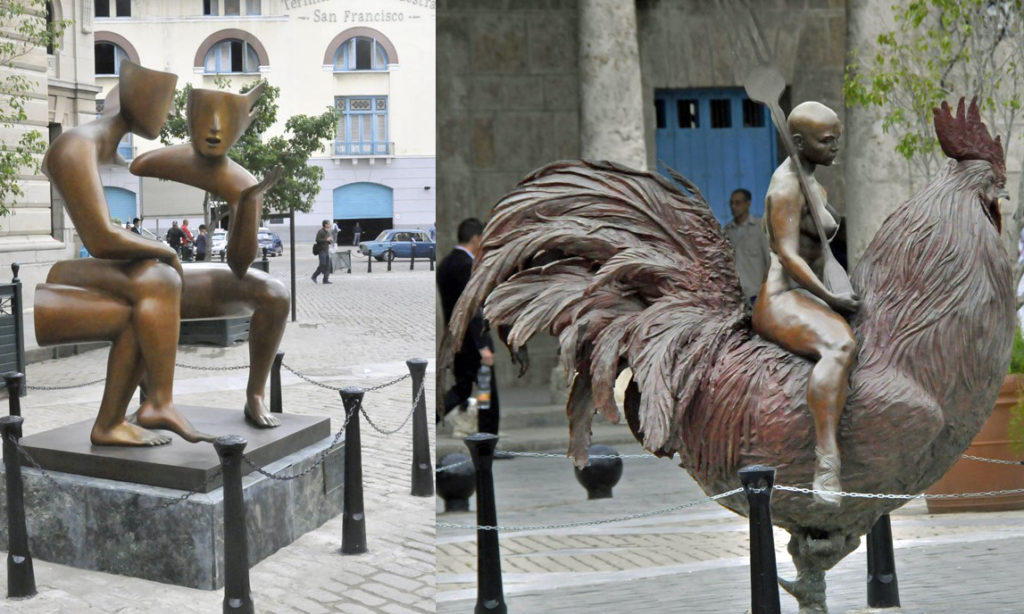
Statues recently placed on two historic Old Havana squares reflect a modern attitude in a country not known for its openness.
The Plaza de San Francisco was built in the sixteenth century just west of the Port of Havana. Named after a Franciscan convent on the site, the square originally housed a market and later became notorious for its gambling activities, including cockfights. Today, Havana’s cruise ship terminal lies at the eastern edge of the square. As more visitors began arriving in the area, the government undertook efforts to give the square a less austere look. On May 25, 2012, the city dedicated a statue titled “La Conversacion” (The Conversation), created by a French sculptor and donated to Cuba by the French ambassador. The elegant bronze sculpture, atop a marble plinth, portrays two people engaged in conversation, with large portions of their bodies missing. The artist’s apparent intent was to illustrate the frequent need for people who talk with each other to fill in the blanks in their expressed words.
Less clear is the meaning of another bronze sculpture, erected in 2012 in Plaza Vieja, a square just south of Plaza de San Francisco that became the site of the harbor market when the Franciscan monks objected to the noise of the market on their square. This sculpture, called “Viaje Fantástico” (Fantastic Voyage), depicts a voluptuous bald woman, nude but for her spike heels, sitting astride a rooster and resting an enormous metal fork on her right shoulder. The sculptor, a Cuban artist, has never revealed the meaning of his work. However, some Old Havana guides speculate that the evocative statue pays homage to the prostitutes who have long worked in the area, relying on their bodies for their next meal. So popular is this interpretation that the sculpture is often called the “Prostitution Statue.”
Comments are closed.